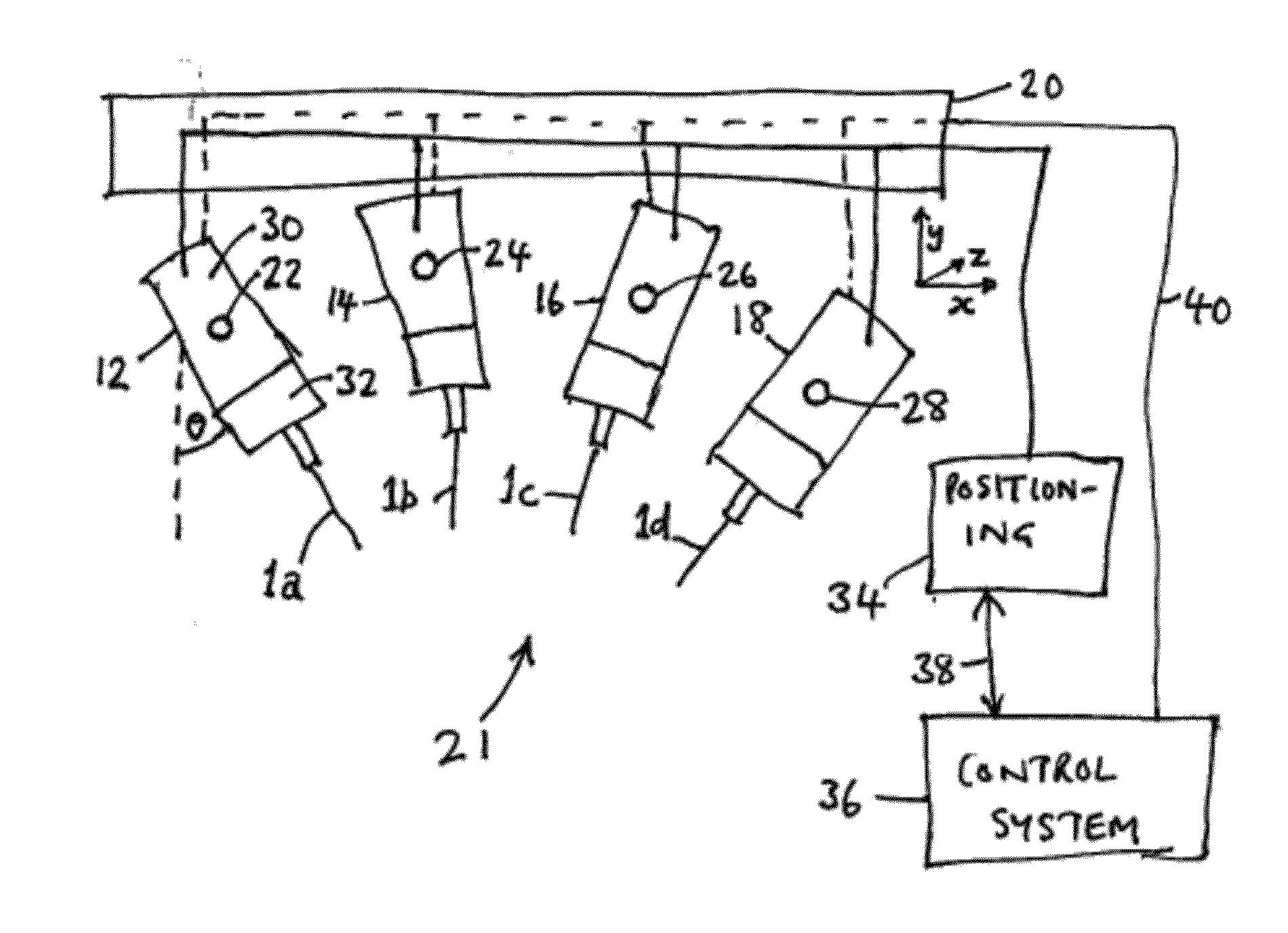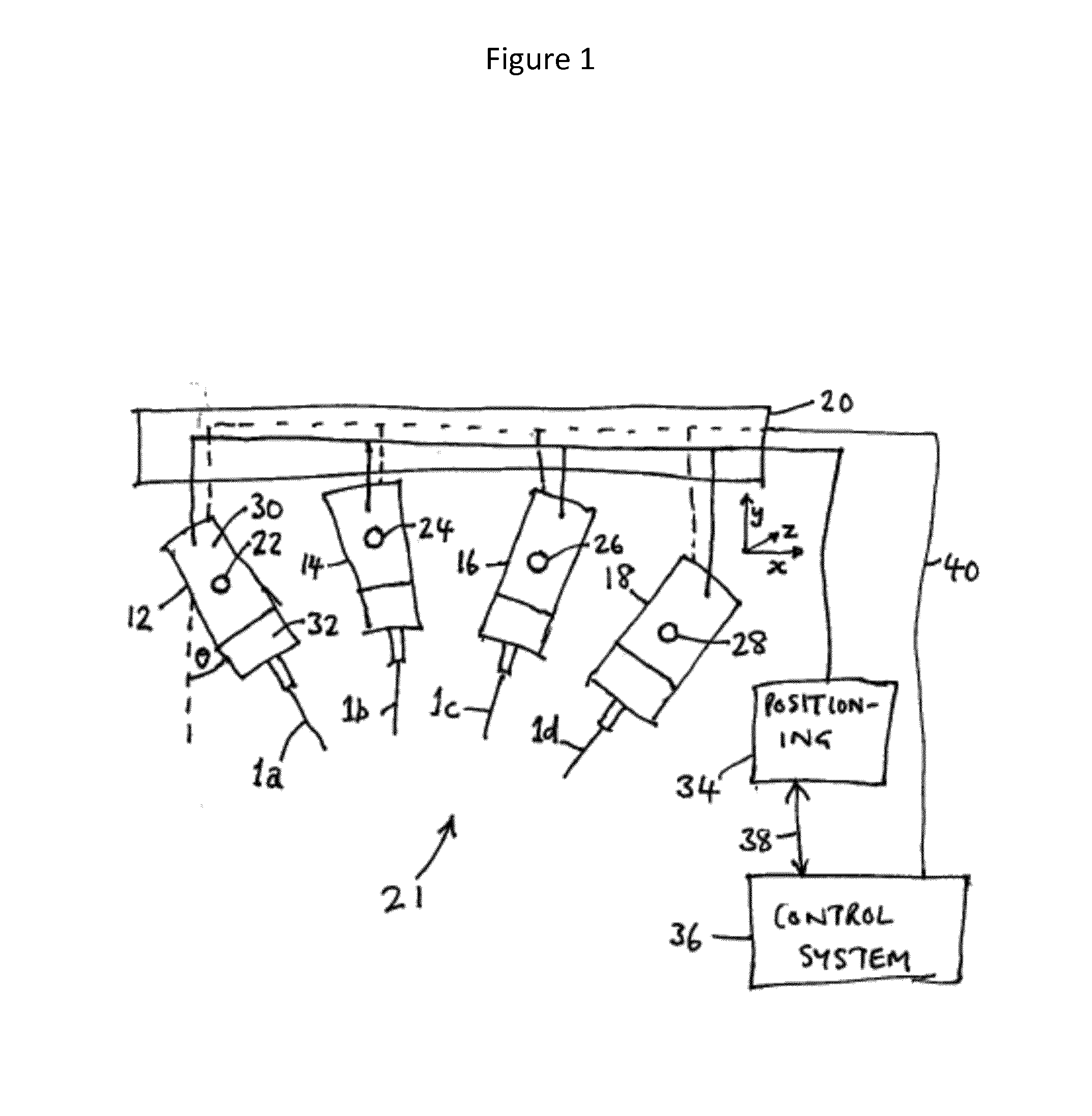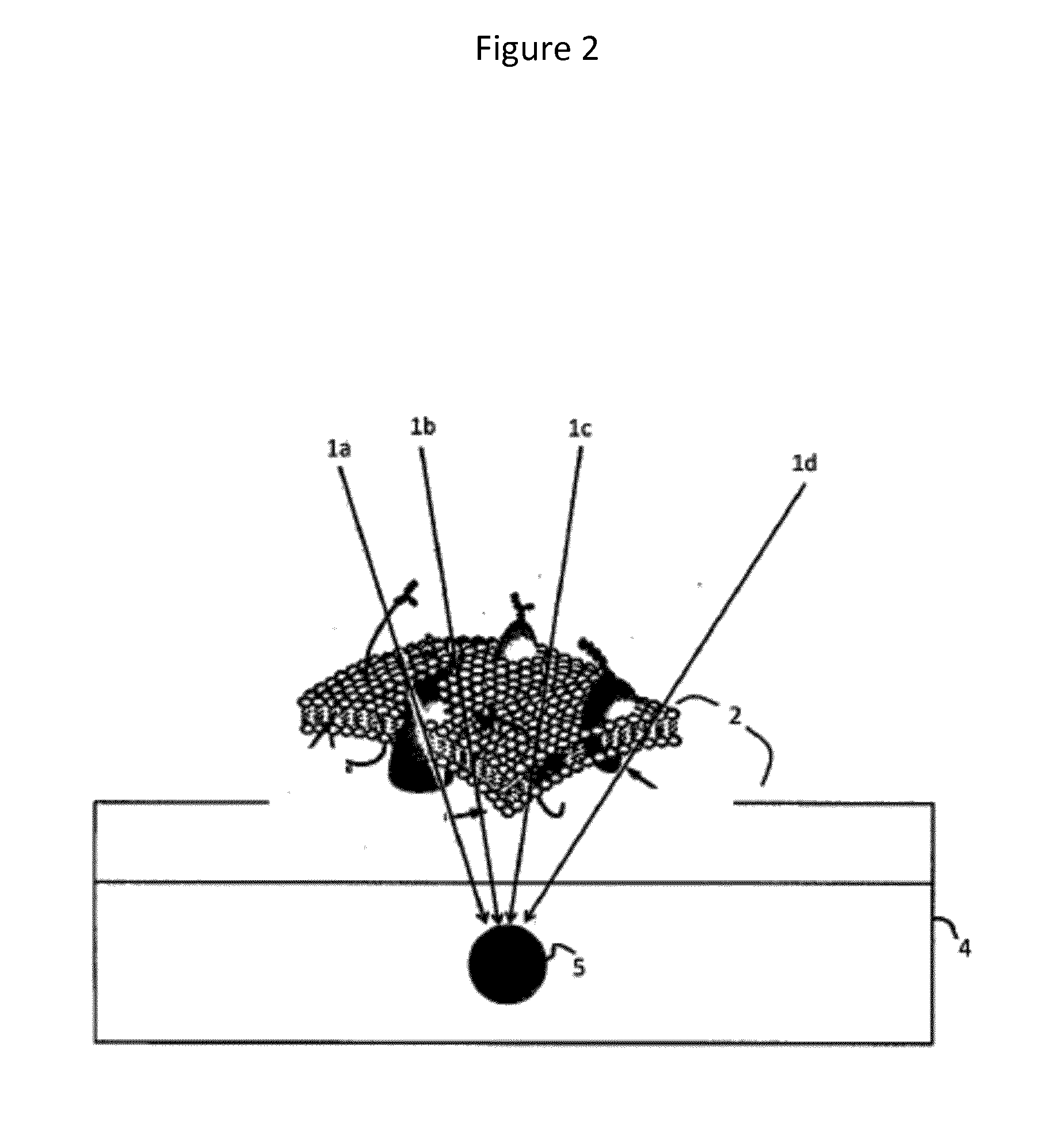Medical system for treating deep surface targets
a medical system and target technology, applied in the field of laser-based medical systems and methods, can solve the problems of limited use of lasers in medicine or similar fields, the ability of lasers to target deep within healthy tissue, and the structure and tissue that are buried deep within healthy tissue pose a special problem, and achieve the effect of high energy level and inherent safety features
- Summary
- Abstract
- Description
- Claims
- Application Information
AI Technical Summary
Benefits of technology
Problems solved by technology
Method used
Image
Examples
example 1
[0061]Three 1064 nm long pulse lasers 12-16 were implemented in a treatment of fresh cadaver tissue. Subclinical fluence settings were used.
[0062]A thermometer was placed at 3 mm depth, and in a second study in 5 mm depth. Firing of a single 1064 nm laser with a subclinical fluence did not raise the temperature at 3 mm depth significantly. At 5 mm depth, no temperature change could be observed.
[0063]Firing the three 1064 nm lasers 12-16 from different angles, using surface cooling, and aiming all beams 1a-1c at one spot at 3 mm depth produced a significant observable rise in the temperature at that spot.
[0064]Histology with Azan staining (see Mallory F B (1900) A contribution to staining methods. Journal of Experimental Medicine 5: 15-20) of that area showed no damage to superficial structures such as epidermis or superficial dermis. In the deep dermis—approx. 3 mm deep—denatured collagen could be seen.
[0065]In another procedure, the three beams 1a-1c were aimed at 5 mm depth. The s...
example 2
[0073]Three 1064 nm long pulse lasers were implemented in a treatment of fresh cadaver tissue. Subclinical fluence settings werde used.
[0074]A thermometer was placed in 3 mm and in a second study in 5 mm depth. Firing of a single 1064 nm laser with a subclinical fluence did not rise the temperature in 3 mm depth significantly. In 5 mm depth no temperature change could be noticed.
[0075]Firing the three 1064 nm lasers from different angles, using surface cooling, aiming all beams on one spot in 3 mm depth showed a significant rise of the temperature in that spot.
[0076]Histology with Azan staining (see Mallory F B (1900) A contribution to staining methods. Journal of Experimental Medicine 5: 15-20) of that area showed no damage to superficial structures as epidermis or superficial dermis. In the deep dermis, approx. 3 mm deep, denatured collagen could be seen.
[0077]In another setting, the three beams were aimed at 5 mm depth. The same energies were fired; a significant change of the te...
PUM
 Login to View More
Login to View More Abstract
Description
Claims
Application Information
 Login to View More
Login to View More - R&D
- Intellectual Property
- Life Sciences
- Materials
- Tech Scout
- Unparalleled Data Quality
- Higher Quality Content
- 60% Fewer Hallucinations
Browse by: Latest US Patents, China's latest patents, Technical Efficacy Thesaurus, Application Domain, Technology Topic, Popular Technical Reports.
© 2025 PatSnap. All rights reserved.Legal|Privacy policy|Modern Slavery Act Transparency Statement|Sitemap|About US| Contact US: help@patsnap.com



